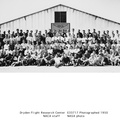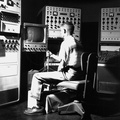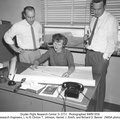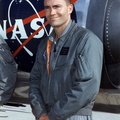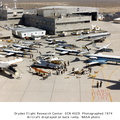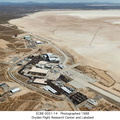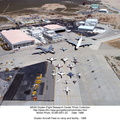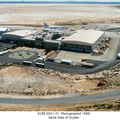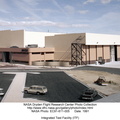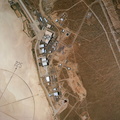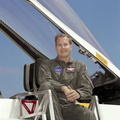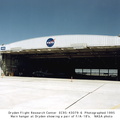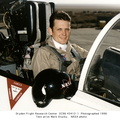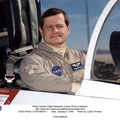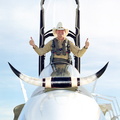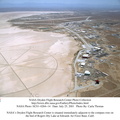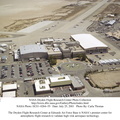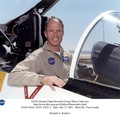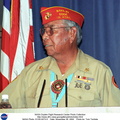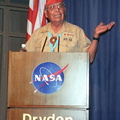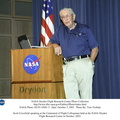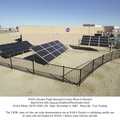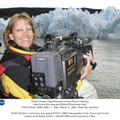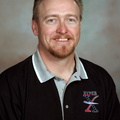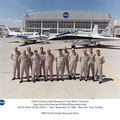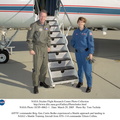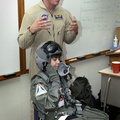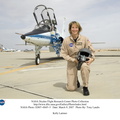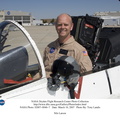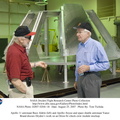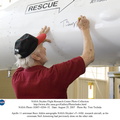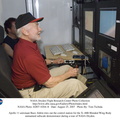
WIKIARCHIVES.SPACE
The Human Spaceflight Archive

In March 1945 Joseph A. Walker joined the National Advisory Committee for Aeronautics' Aircraft Engine Research Laboratory, Cleveland, Ohio, (later NASA's Lewis Research Center, now the Glenn Research Center) as a physicist. He transferred to the NACA High-Speed Flight Research Station, Edwards, California in 1951, as a research pilot.
Information
- Taken in
- Edwards Air Force Base
- Author
- NASA
- Description
-
In March 1945 Joseph A. Walker joined the National Advisory Committee for Aeronautics' Aircraft Engine Research Laboratory, Cleveland, Ohio, (later NASA's Lewis Research Center, now the Glenn Research Center) as a physicist. He transferred to the NACA High-Speed Flight Research Station, Edwards, California in 1951, as a research pilot.
For the next fifteen years Walker served as a pilot at the Edwards flight research facility (today known as NASA's Dryden Flight Research Center) on such projects as the Bell X-1#2 (2 flights, first on August 27, 1951), Bell X-1A (1 flight on July 20, 1955), X-1E (21 flights, first on December 12, 1955), Douglas D-558-I #3 Skystreak (14 flights, first on June 29, 1951), Douglas D-558-II #2 Skyrocket (3 flights, first on April 29, 1955), Douglas D-558-II #3 Skyrocket (2 flights, first on May 7, 1954). On the Douglas X-3, Joe was project pilot and made all 20 flights, the first on August 1, 1954. Joe considered this aircraft the 'worst' plane he ever flew. He flew the Northrup X-4 (2 flights, first on October 18, 1951), Bell X-5 (78 flights, first on January 9, 1952). He also flew programs involving the F-100, F-101, F-102, F-104 and the B-47.
Walker made the first NASA flight on the North American X-15 on March 25, 1960. His 25th and final X-15 flight on August 22, 1963, reached 354,200 feet, an unofficial record altitude of almost 67 miles.
On October 30, 1964, Walker took the first Bell Lunar Landing Research Vehicle (LLRV) on its maiden flight, reaching a peak altitude of 10 feet and a free flight time of just under one minute. Two LLRV's and three Lunar Landing Training Vehicles developed from them were used to develop piloting and operational techniques for lunar landings. In November, he left the program after 35 flights on the first LLRV.
Walker flew chase flights as well as research flights. On June 8, 1966 he was flying chase in NASA's F-104N for the Air Force's experimental bomber, North American XB-70A, when he was fatally injured in a mid-air collision between the planes.
Joe graduated from Washington and Jefferson College in 1942, with a Bachelors degree in Physics. He enrolled in the civilian pilot training program in 1941 and, after graduation from college, entered the Army Air Forces. During World War II he flew P-38 fighters and F-5A photo reconnaissance for the Air Force, earning the Distinguished Flying Cross and the Air Medal with Seven Oak Clusters.
Walker was a charter member of the Society of Experimental Test Pilots and one of the first to be designated a Fellow. He was honored with the Robert J. Collier Trophy, the Harmon International Trophy for Aviators, the Iven C. Kincheloe Award and the Octave Chanute Award, all in 1961. He received an honorary Doctor of Aeronautical Sciences degree from his alma mater in June of 1961 and was named Pilot of the Year in 1963 by the National Pilots Association.
Joseph Albert Walker was born February 20, 1921, in Washington, Pennsylvania; he died on June 8, 1966 at Edwards, California.
- Created on
- Albums
- US SPACE PROGRAM / FACILITIES / DRYDEN/ARMSTRONG CENTER
- Source link
- https://www.dfrc.nasa.gov/Gallery/Photo/Pilots/index.html
- Visits
- 17
- Rating score
- no rate
- Rate this photo
- License
- Public Domain
- Modified by WikiArchives
- No (original)
- Downloads
- 0
Powered by Piwigo




























